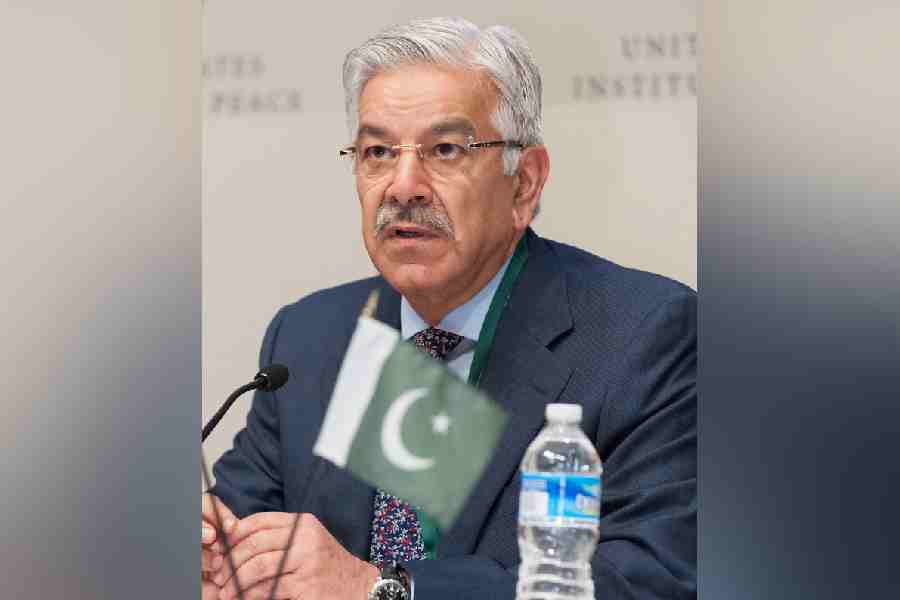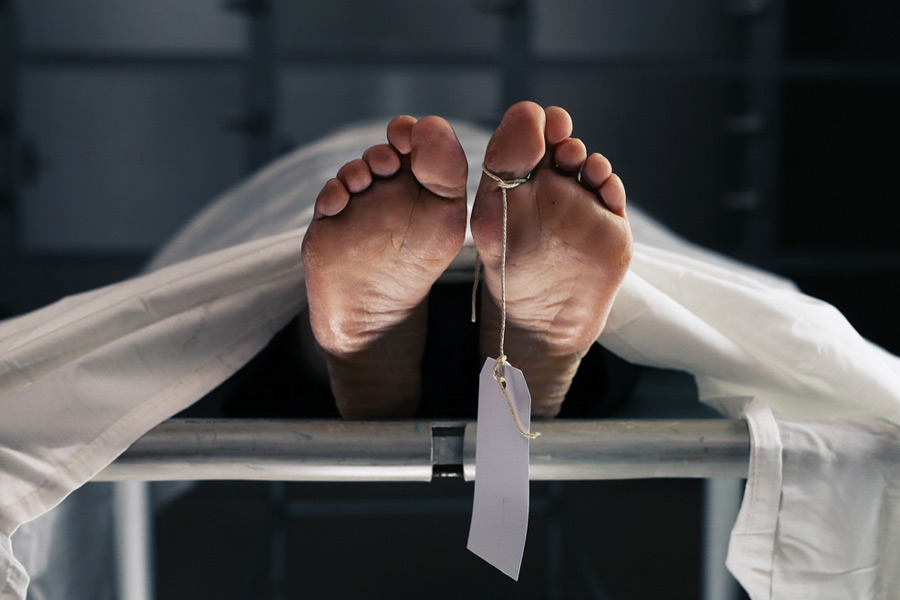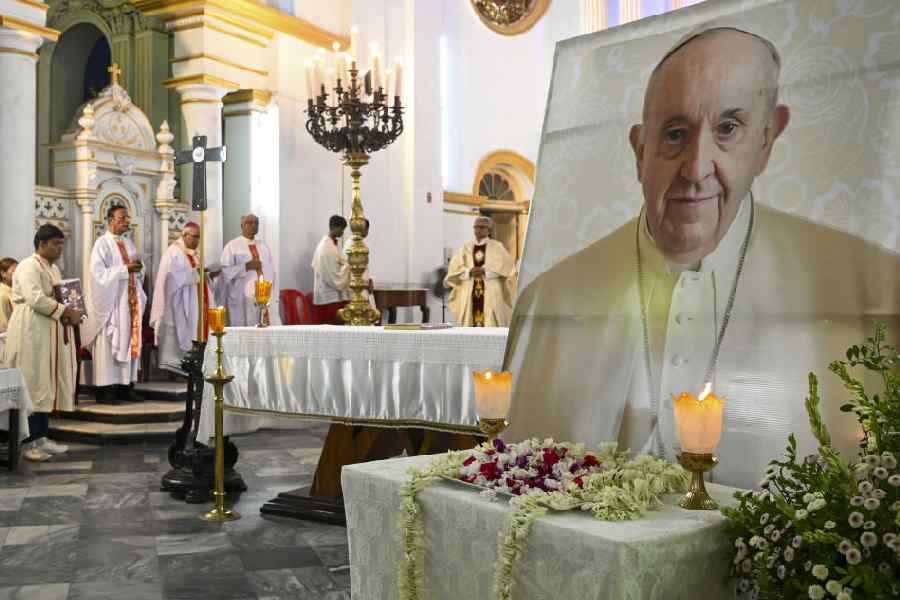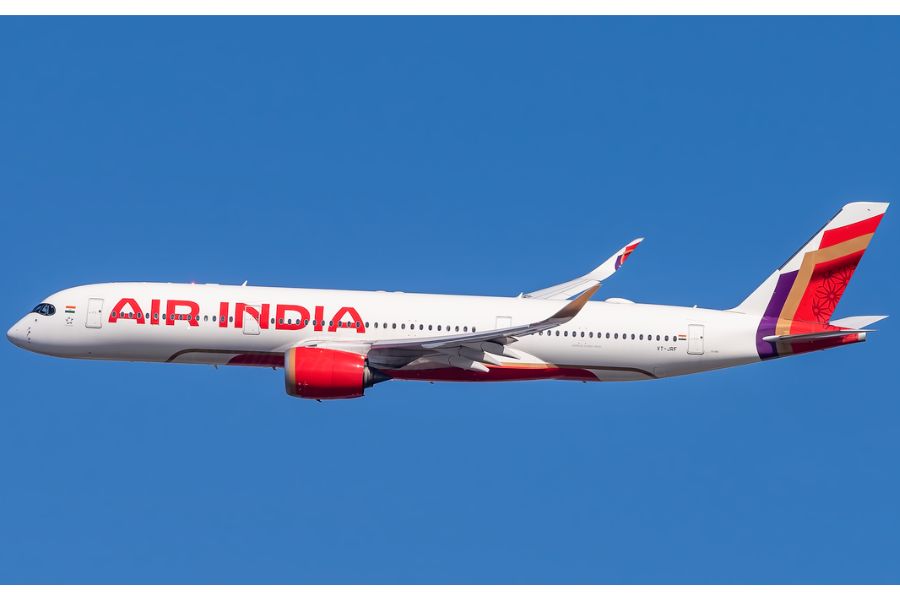

A policeman turns a key in the lock. The doors swing open and Michael Madhusudan Dutt stares back at you. "Michael was an interpreter in the police court of magistrate Charles Kingsford [in late 19th century, at a monthly salary of Rs 125]," says Nihar Ray, retired officer of Kolkata Police. This hall on the first floor of the Kolkata Traffic Police Department at Lalbazar used to be the police court or the court of the chief presidency magistrate. Charles Kingsford presided over this august court between 1907 and 1908.
Three years ago, it was converted into what is known in Lalbazar parlance as "the lounge" - a cross between a leisure space for officers or a waiting area for visitors and a museum of sorts on city traffic and its policing. The lounge does not have any original exhibits, only photographs, nuggets of information and more photographs of records dating back to the British era.
So, as you move from wall to wall, a picture of a different Calcutta emerges. A Calcutta where the first metalled road - Bahar Sarak or Circular Road - was built in 1799. A city in which palanquin bearers went on indefinite strike, as early as 1827, to protest the Government of Bengal's decision to regulate the "exorbitant fares" charged by them. But traffic couldn't come to a standstill. So, one Mr Brownlow improvised his personal palki - threw in four wheels and some horses - and the Brownburry Carriage was born. The same year, the chhakra or Hackney Carriage also started plying.
Some walls just have rows of photographs - bullock carts and motor buses rubbing shoulders outside the Howrah Station in 1940, a jam-less Esplanade, the flying squad with their elaborate head-dresses... There are other walls, laden with carefully curated traffic records and stats. The walls merely meet, but their stories bleed into each other.
It seems there was a time when overloading of carriages led to a lot of chhakra accidents and this, in turn, led to the introduction of Section 279 of the Indian Penal Code of 1860 and the Stage Carriage Act of 1861. The police commissioner was made the licensing authority and the display of the license number and the owner's name and address on the carriage made mandatory. The penalty for disobeying ranged between Rs 100 and Rs 500, a whopping fine those days. Paris followed suit 30 years later in 1893. On a lighter note, there is also the photograph of a letter dated July 8, 1854, written by the chief magistrate to the deputy superintendent in a lovely cursive hand "requesting" him to discourage parking and cleaning of carriages and horses under the trees near Elliot Tank on Chowringhee Road.
A primitive table has been titled "Faults Attributed To Pedestrians". It is for the period 1950-1951. The long list of "faults" reads thus: "stepping, walking or running off footpath into road; crossing road, not masked by stationary vehicle; walking or standing on roads; playing in road, physical defects, sudden illness, under influence of drink or drug; holding on to vehicles and error of judgement of negligence (sic)".
The same table lists the number of vehicular collisions (between vehicles) that year. Of a total 17,319 cases, the majority - 9,042 - were caused by collision between vehicles and fixed objects.
The seminal idea behind the lounge was to give officers a sense of history, even context. It is a different matter that even now, even within the Lalbazar precincts, few seem to have heard of it. "Visitors who come to the department can wait here and also read about the history of the place," says Ray. But visitors are usually shown into a small room close to the elevator and outside the deputy commissioner's office, perhaps for security or maintenance reasons. If that is so, does it not make sense to shift the lounge to a more accessible location? "Will Taj Mahal be the same Taj Mahal if it is shifted somewhere else?" says Ray. "The place has a relevance."
According to V. Solomon Nesakumar, deputy commissioner of police, traffic department, Kolkata Police, dignitaries, students and those interested in research are encouraged to visit. There's the little matter about the lock though. Behind it, after all, lies a wealth of knowledge.










